Real Ant Moebius Strip
January 30th, 2012 By NOTAndrew QuitmeyerUPDATES: more recent pics at the end (video coming soon!)
The goal of this craft is to create a hanging Moebius strip for live ants to crawl upon. It is inspired by the escher drawings of ants on Moebius strips, and also the Moebius strip’s archetypal description that “If an ant were to crawl along the length of this strip, it would return to its starting point having traversed every part of the strip (on both sides of the original paper) without ever crossing an edge.”
We are going to make a primarily sculptural/aesthetic device to hang over our boxes of ant nests. We should be able to load ants onto the strips and watch them wander around in endless crazy loops. To keep with the current aestethic of our ant containers, the strips will be forged from transparent acrylic. The primary crafting experience in this project comes from building the tacit knowledge of turning and manipulating hot molten acrylic.
Materials:
To create this project you will need:
- 24 inch long acrylic sheets (1/8th in)
- 3 Hard rubber (somewhat heat resistant) clamps
- Heat gun
- Monofilament (thin fishing string)
- Cylindrical, heavy, heat resistant wrapping surface. I used 7-8inch diameter glass ash tray.
- Additional heat resistant cylinder (comes in handy sometimes)
- Something to cut the acrylic sheets (I used a laser cutter, a dremel with the right bit could also work, or a bandsaw)
- Wet sponge. If you want to make a part of the acrylic instantly cooler and freeze into place, dab it with the sponge.
Step One: Cut
First you will need to make several strips from your original acrylic sheet. Follow the attached adobe Illustrator template to laser cut it, or base your cutting off. In short, each strip should be about 24 x 3/4 inches, and have several small holes in each end. Make several strips to test out the techniques on before doing the final one.
Step Two: Play
Prop the heatgun on your worktable, and using some scrap strips of acrylic, and grabbing it with your clamps, practice smoothly bending and twisting the plastic. Get a feel for how quickly it heats up, and at what distances from the heat gun. The goal is to avoid extremely localized heating which can result in sharp bends, or really hot areas that can make it bubble.
Step Three: Twist
Clamp one end of the strip to the thick ash tray, and hold the other clamped end of the strip in your hand. Slide the strip slowly back and forth in front of the heat gun while rotating the end in your hand 180 degrees. It is best to twist it even a little further than 180, because when we start wrapping the strip into a circle it tends to try to unwind itself.
Step Four: Wrap
Now that your strip has a nice smooth twist in it, keep the entire thing heated up and begin slowly bending it to try to make the ends touch. Do not bend it too quickly or the strip might snap! Don’t leave the heat gun pointed in one area too long or you may get a very sharp bend, which may or may not be the aesthetic you are looking for.
Step Five: Connect and Smooth
When your bend is good enough to connect both ends of the strip, clamp them both onto the ash tray in the same spot. Use the heat gun to go back around the strip and smooth out, or make certain areas more circular and bendy. Keep your ends clamped together around the dish in the moebius shape until it has thoroughly cooled.
Step Six: Tie it up
Once cool, use your fishing wire to tie the ends together. Lace the holes together tightly and trim the ends.
Step Six Alternate: Fuse
If you are really good with acrylic you could also try to use weld-on to fuse the ends together, or simply heat the ends up REALLY hot and squish them together. I have tried both, but they were hard to make it look nice.
Step Seven: Hang and load
Loop another string of mono-filament through the end holes to make a long strap for hanging your moebius strip.


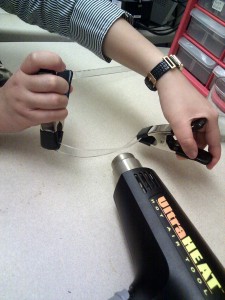
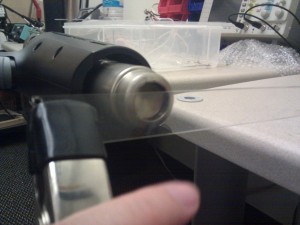
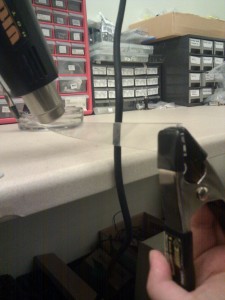

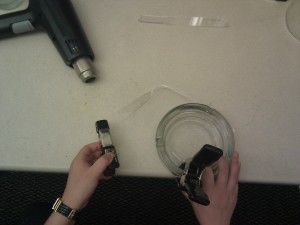
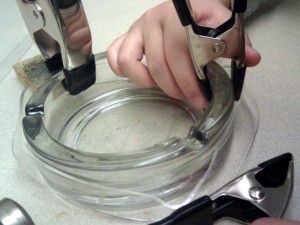
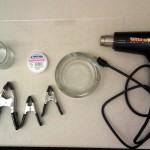

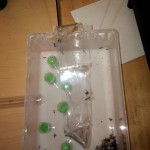
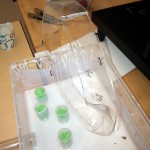

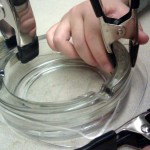
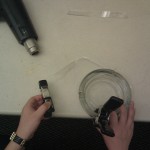
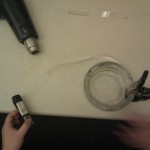
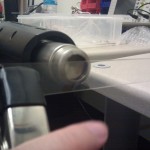
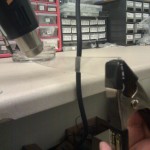
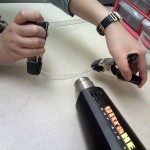

January 31st, 2012 at 8:40 am
The doing is very fun and crafty. It definitely need time and patience. The trick is to heat the material even so that it won’t be over twisted at some parts or under twisted at others. It’s also very important to control the strength of twisting. I broke up the trial piece once because I was pulling too hard. I recommend everyone to try this out. It’s definitely a very unique experience.